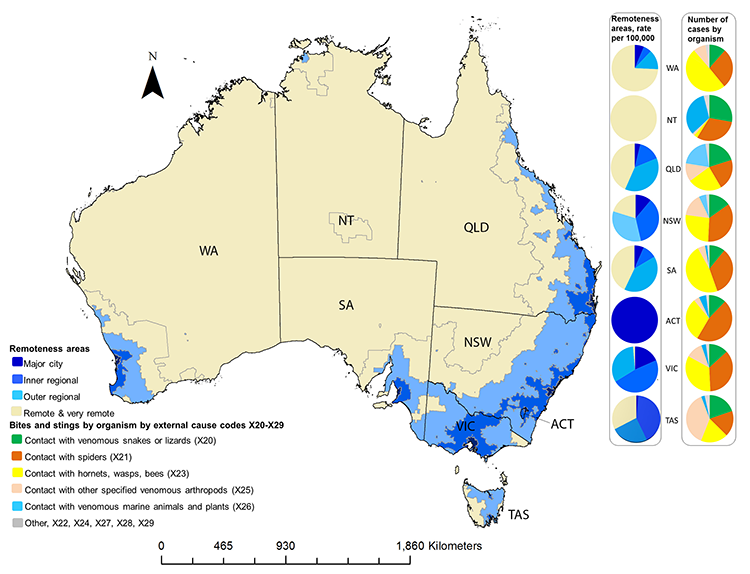Australian bite and sting trends: Australian Venomous Injury Project (AVIP)
-
Project Leader

Dr Andrew Watt+61 3 9035 3036
Project Details
The purpose of the Australian Venomous Injury project (AVIP) is to decrease envenoming related morbidity and mortality from snakes, jellyfish, ants, spiders, bees and the numerous other venomous animals that bite and sting found in Australia. The AVRU with partners have developed a comprehensive and co-ordinated national database on envenoming to enable research and provide contemporary information that can be translated to help health networks, practitioners, their patients and public to gain value from research evidence, especially in areas of health inequalities and injury prevention.
The AVIP is divided into three areas; surveillance, research and translation:
- Surveillance: The AVIP seeks to address surveillance, biostatistics and epidemiological components to establish the burden of envenomation injury by defining the socioeconomic, remoteness, age, sex and geographical, hospitalisation, death, climatic and ecological factors within a geospatial dataset.
- Research: Using Australian datasets within a geospatial framework, corollaries can be identified and where this might affect health networks, clinicians, public and specifically at risk groups. This work can identify gaps in knowledge and realise policy and research opportunities that can be translated back to the populations identified.
- Translation: Communicating research findings in an accelerated fashion supports health care and the injury prevention. In addition to providing online knowledge and education resources work will be collaborative within the health industry, health networks, community and consumer groups to disseminate knowledge and key research findings
A key gap identified in January 2014 was the need for a national overview of envenomation, as it is from a national overview more focused priorities can be derived. Work conducted from January 2014 has established a national database with ethics approvals from the University of Melbourne (UoM), National Coronial Information System (NCIS) and Australian Institute of Health and Welfare (AIHW+SA) together with national coronial datasets (NCIS 2000 to current), AIHW (Cause of Death Unit Record Files (COD URF) 2006-2011) and AIHW (public hospital admissions 2001-2013). A geospatial database (GIS) was established using geocoded mortality events from the NCIS database, in addition to information from multiple commonwealth sources that provide information on: government socio economic regions, remoteness structures, primary health networks, road accessibility, hospital locations, urban centres and indigenous regions.
Building on this, from June 2015 geostatistics were used to analyse trends and correlations in order to determine the national frequency of envenomation related injuries resulting in death and hospitalisation in the population of Australia between 2000-2013, and the extent to which envenomation is concentrated in certain populations based on socioeconomic, remoteness, age, sex and geographical locations.

See also Mapping Australian venomous bites and stings 2016 (PDF 1.2 MB)
Research Group
Australian Venom Research Unit
Faculty Research Themes
School Research Themes
Key Contact
For further information about this research, please contact the research group leader.
Department / Centre
MDHS Research library
Explore by researcher, school, project or topic.